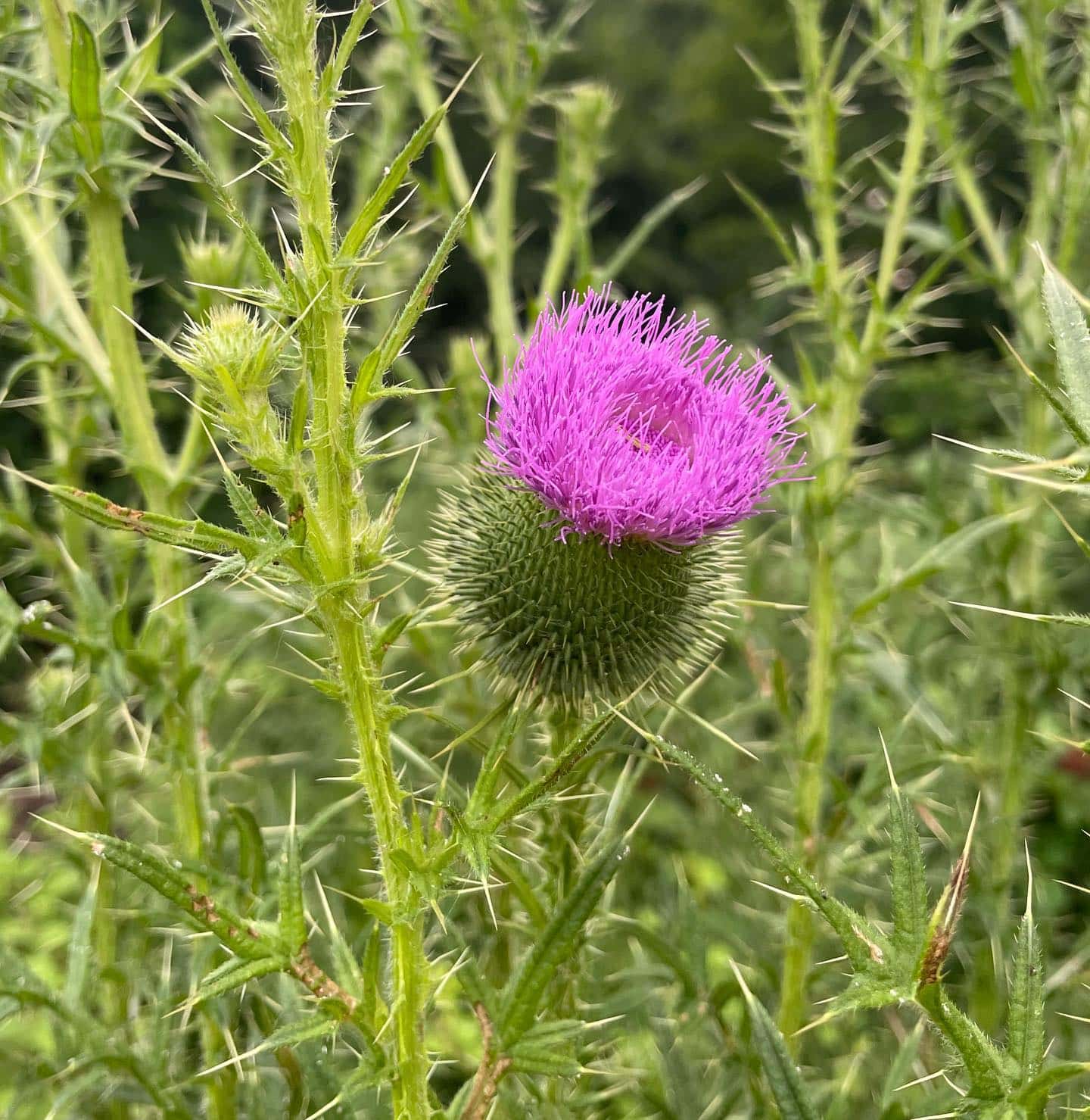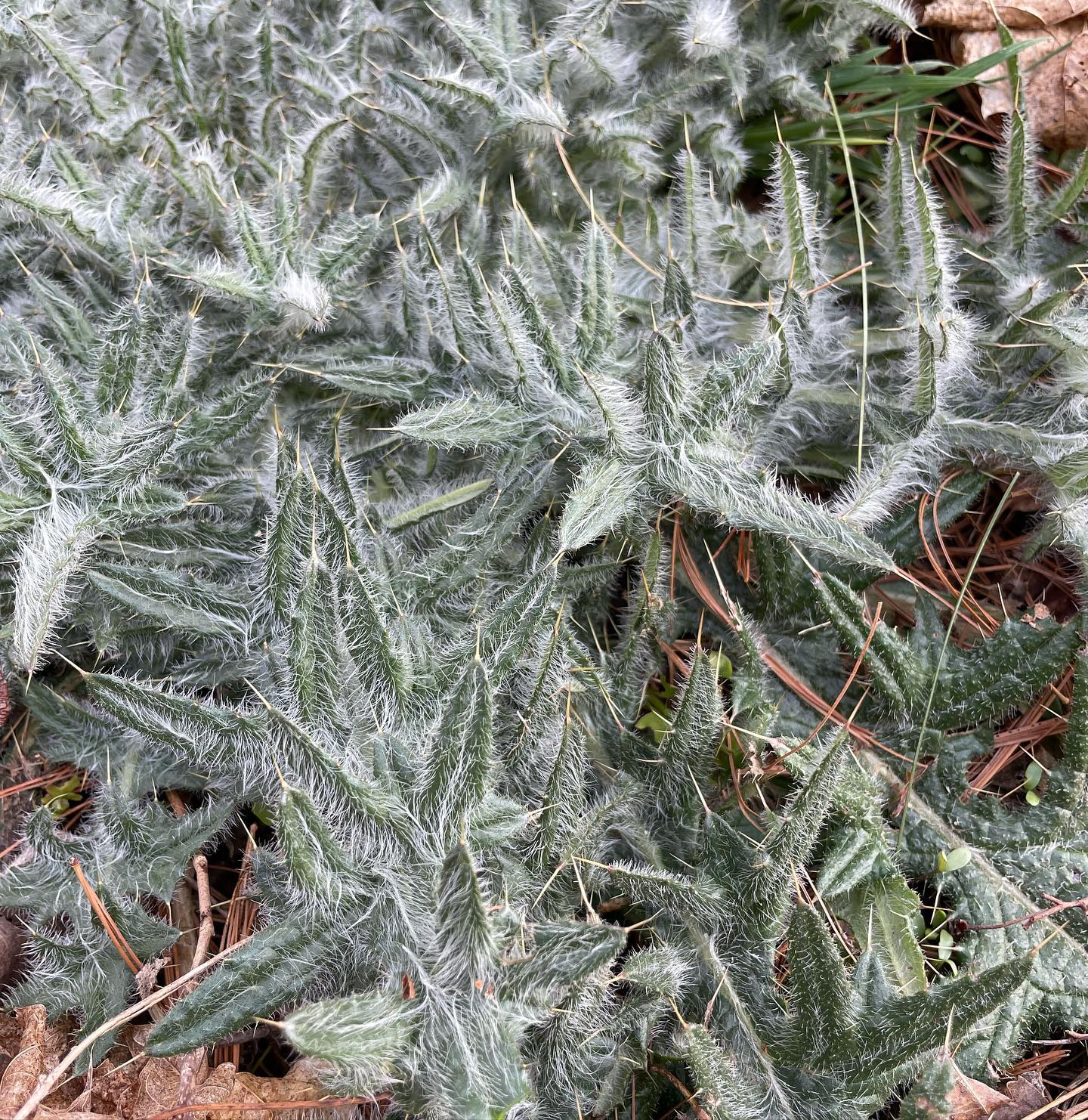Page Created by Connecticut Foraging Club
Upcoming Events | Meet the Instructors | Plant Archive | Mushroom Archive
----------------
Upcoming Events | Meet the Instructors | Plant Archive | Mushroom Archive
----------------
Bull Thistle (Cirsium vulgare) is an edible plant that is native to Eurasia. Bull thistle has become naturalized in North America and is now considered invasive in some areas.

There are over 200 species of thistle in North America, 60 of which are native. Thistles are related to globe artichoke. They can be found in disturbed areas, roadsides, and pastures.
Bull thistle has spines that lie flat on the upper leaf surface. It flowers between June and September.

The entire thistle plant is edible after removing the thorns. Roots are best harvested in early spring, before the plant sends up a flower stalk. Roots can be peeled and then steamed or boiled.
Flower stalks can be peeled and then eaten raw or cooked. This is usually the most coveted part of the plant.

All thistle species are edible, although the quality of roots and flower stalks varies.
Thistles have been used medicinally to treat rheumatoid arthritis and inflammation from IBS.
--
Written by Amy Demers, founder of the Connecticut Foraging Club. To learn more about foraging in Connecticut, check out our upcoming classes.






